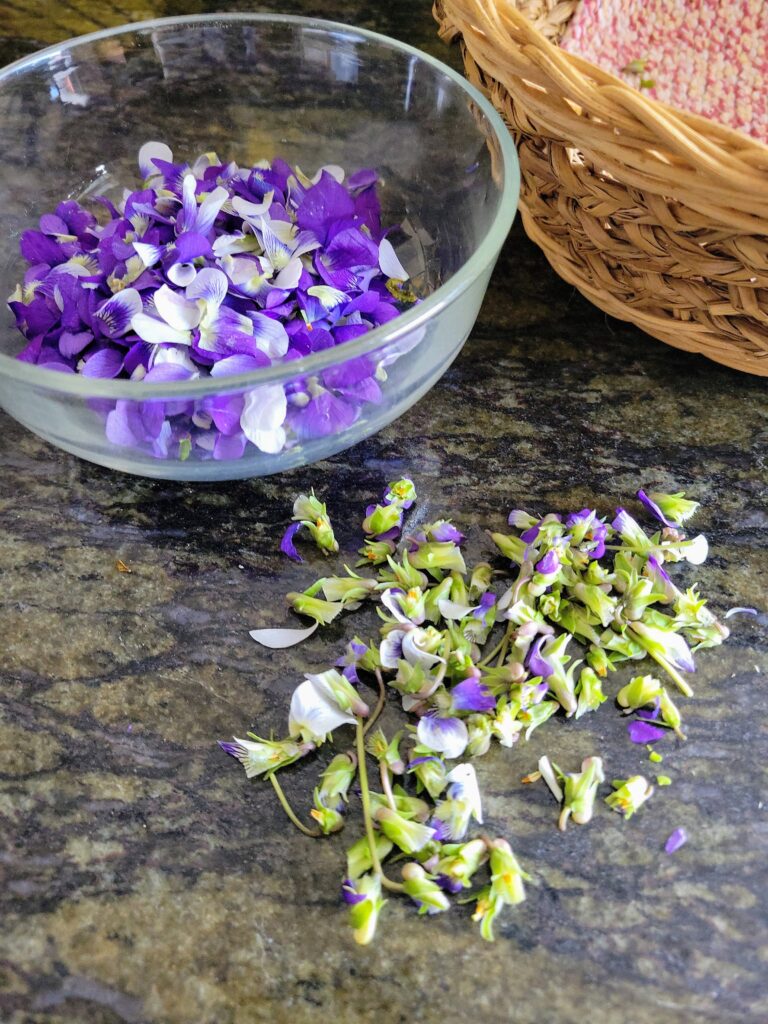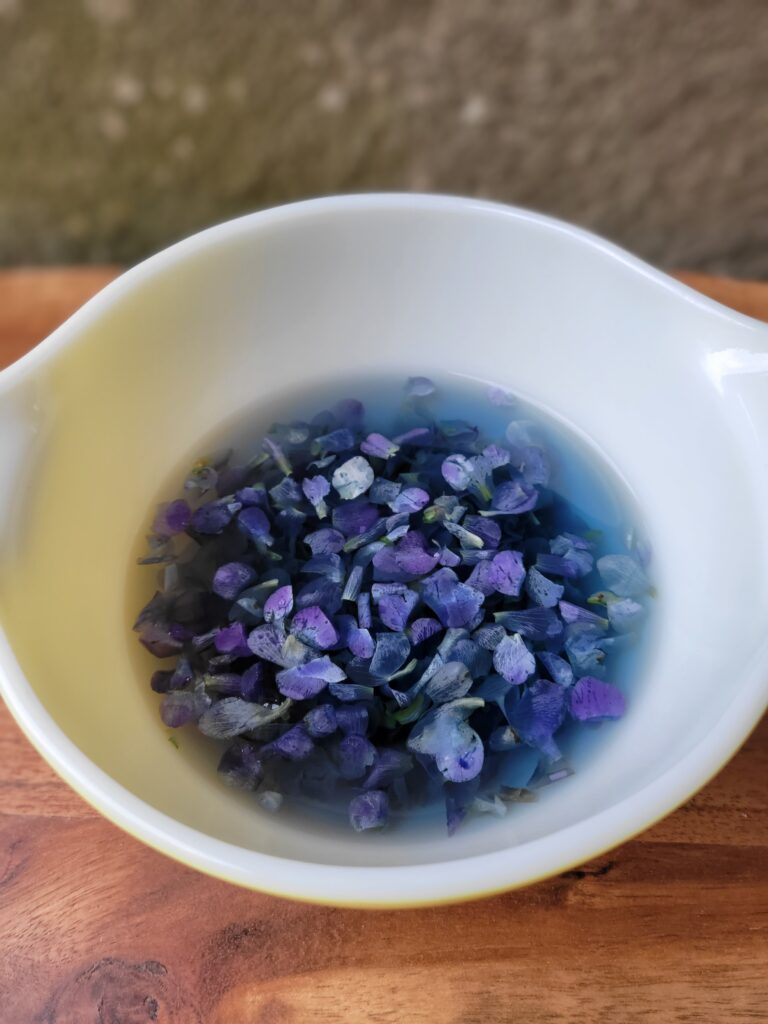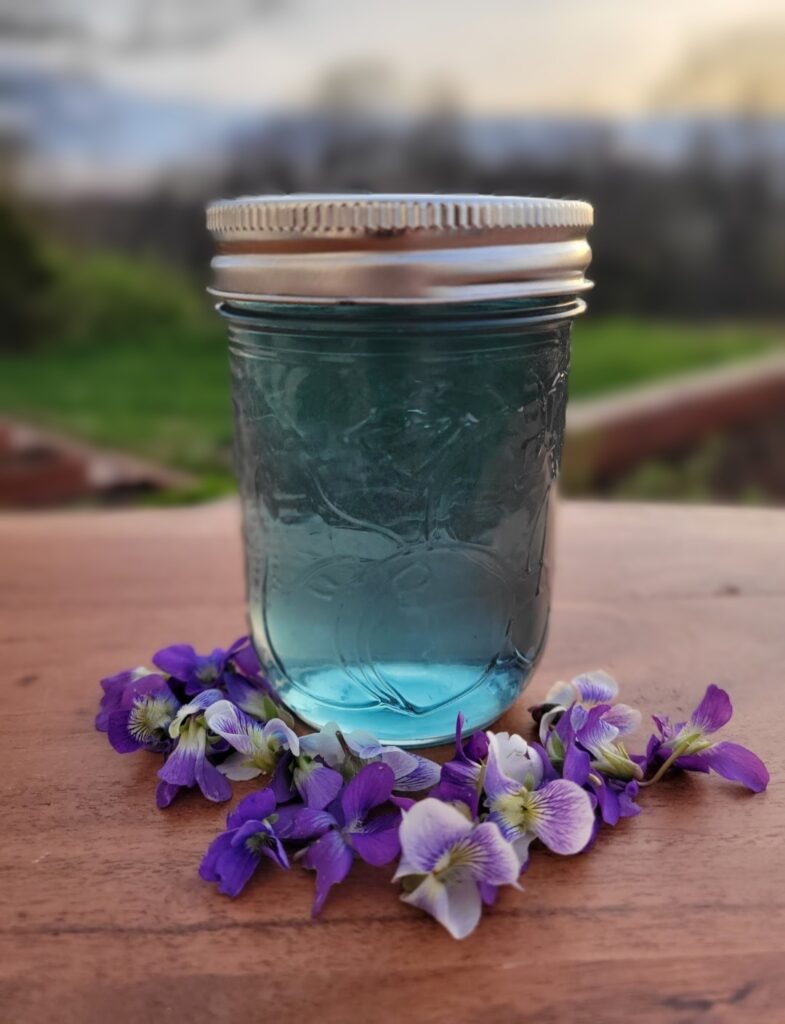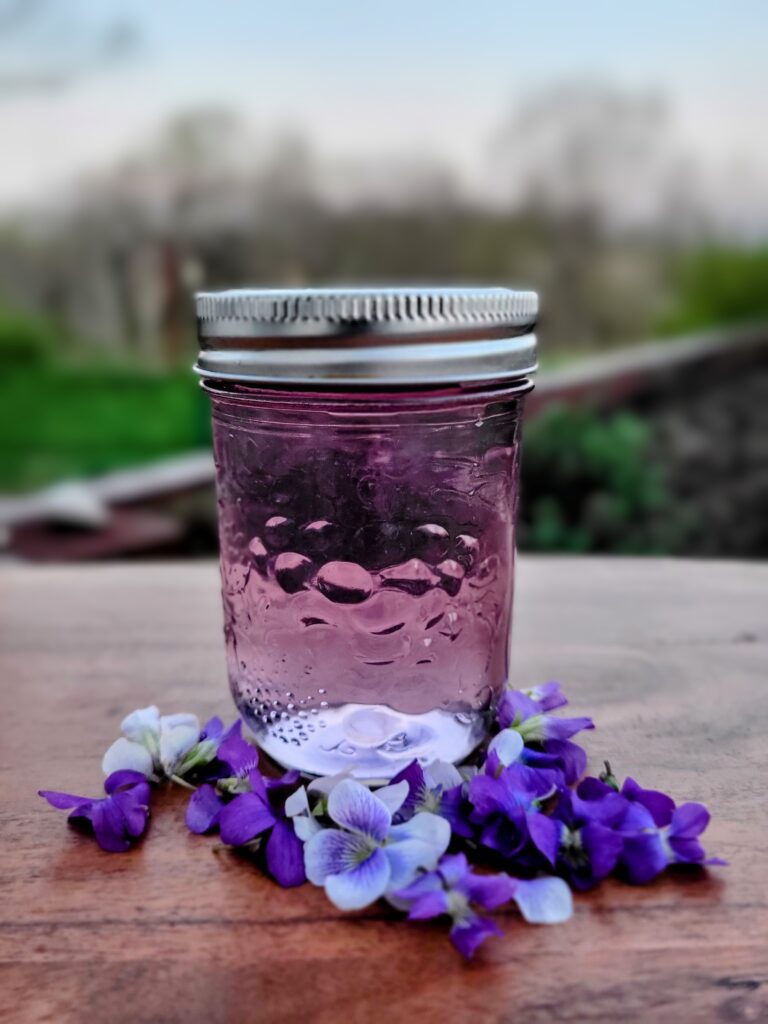In early Spring, you may start to notice tiny purple flowers popping up in your yard or garden. Chances are these are violets, a beautiful edible flower with so much potential. Violet flowers are from the Viola genus and are one of the first beautiful blooming flowers we can find in early Spring. Found all over the Northern Hemisphere, South American Andes and Hawaii, violets can beautifully adorn any cuisine.
Identification
The common wild violet (genus Viola) is a native wildflower which tends to favour woods, thickets and stream banks. This is a low-growing perennial which features heart-shaped leaves and large blue-violet flowers (sometimes yellow or white). Each flower appears on its own leafless stalk. Depending on location, the flower blooms from early spring into the early summer months.
Purple/blue tends to dominate the wild violets although they are also yellow and white. The flower has an inner white area and is somewhat hairy. Each flower slightly droops. Flowers bloom in early spring and usually by the time the temperatures get hot the flowers die off but the leaves remain.
Violet leaves are palmate, alternate, and are somewhat an oblong heart or kidney shape. The leaf margin is serrated (toothed) and they do not have any hairs. They can grow to anywhere between 13mm and 50mm in width.

Uses For Violets
People have become pretty creative when it comes to using violets. I have seen them used as decorations for cakes, cookies, pastries, smoothies, salads, teas, syrups and even candied. Because violets have a very sweet subtle flavor, they can really be added to anything. One of the most popular ways to use violets is by making a sweet syrup. This syrup is delicious on cakes, ice cream, mixed in beverages etc. Again the possibilities are endless!
Recipe
Ingredients:
• 1 cup packed violet petals
• 1 cup water (distilled or spring)
• 1 cup sugar (honey is a healthy option but won’t look as appealing)
Step 1. Start by removing the violet petals from the green stem. If the green is left on, it will make your syrup bitter so make sure to remove as many as you can. Place your petals in a glass or stainless steel bowl.

Step 2. Heat your cup of water on the stovetop to a rolling boil. Remove from heat and pour over top of your petals. Allow them to sit for 24 hours at room temperature. The water should turn a blue or purple color.
Step 3. After you have allowed your petals to infuse for 24 hours, it’s time to make the actual syrup. Start by straining out the petals and placing the liquid in another glass bowl (I used a measuring cup).

Fill a pot with water and heat on low. Set your glass bowl of violet water in it, being very careful to keep them separated. You want to create a water bath where the warm water underneath will heat your glass bowl. If you own a double boiler that would work as well. The key is to simply heat it slowly.
Add your sugar to the violet water and heat slowly until the sugar or honey is dissolved.
Step 4. Once cool, pour into glass jars. This syrup will stay good for 6 months in the refrigerator. You also can it if you desire but ours never lasts that long.

Why Is My Syrup Blue?
The violet syrup will turn greyish blue color. This sometimes depends on the acid/alkaline levels of your water. Don’t worry, this is normal. To return it to a vibrant violet color (more purple than deep blue it was in the tea phase), add a few drops of fresh lemon juice into the syrup. Adding the lemon juice adds hydrogen to the anthocyanins and changes the molecular structure turning it pink or purple.
This is always an exciting science experiment for children!

Final Thought
Because violets are easy to identify and are found almost everywhere, they make a wonderful plant for beginner foragers such as children to find and work with. They are beautiful, tasty and can be added to any cuisine you desire! Happy foraging!
Stay Wild

Kayce Heister
Kayce is a Clinical Herbalist, Naturopathic Practitioner (HHP), Active Forager, Wild Food Chef and Mother of three. She has spent the last 20 years practicing herbalism and natural health, and spends most of her time educating others on the amazing potential the natural world can offer.